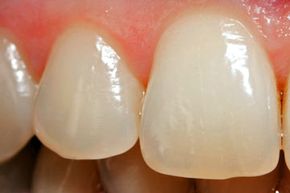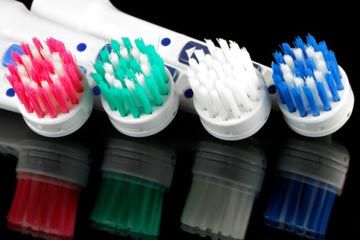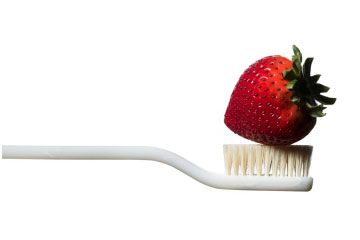Human skeletons will often have a set of teeth long after the body decomposes, and these teeth can look like an extension of the skull. Tooth enamel, the visible, outer part of our teeth, however, is different from bones because it can die while our bodies are still alive. Bones also have living tissues that change throughout a person's lifetime, but tooth enamel is made up of non-living tissue. And while bones are certainly hard, tooth enamel is the hardest tissue the human body produces. It is an almost incomparably tight collection of mineral bonds that covers the soft, inner tooth, and it can last throughout a person's life (and even past death) when treated with care.
If tooth enamel is so tough and has the ability to last for so long, then why do we hear so much about protecting and strengthening it, and losing it and repairing it? It doesn't have any living cells, so what kind of damage can we do? A lot can happen in the lifetime of a tooth, and because the enamel is not alive, it can't repair itself. Wear and decay of permanent teeth need to be prevented because they cannot heal, so to speak.
Advertisement
Tooth enamel is formed by living cells called ameloblasts that make proteins. The proteins provide instructions for forming the enamel and they direct the ultra-strong bonds between the enamel and the stuff underneath, the dentin. After the tooth enamel is finished and its mineral crystals have formed a hard crown around the tooth, all of the cellular and other biochemical movement stops and the enamel remains to protect and crown each tooth [source: Norris].
Just like all minerals, when these strong, nature-made enamel crowns face time, outside forces and chemical reactions, they can start to erode, crack and become demineralized, leaving the living parts underneath vulnerable to further attack. Early signs that tooth enamel is wearing down are invisible to the human eye, but as time passes, you can start to see a surface dullness or discoloration, can experience sensitivity on contact with hot and cold foods, and even air, and can feel a roughness against your tongue. These are just some of the signs that enamel is eroding.
Scientists are working on breakthroughs to get proteins to form new tooth enamel, but that technology isn't likely to be widely available and affordable for most of us any time soon. So how can we prevent wear-and-tear and avoid expensive repairs? Can enamel be remineralized?
If you're enjoying a piece of candy corn with a soda, taking medication, sucking on lemons, or eating and drinking just about anything at all, you may want to read on.
Advertisement



